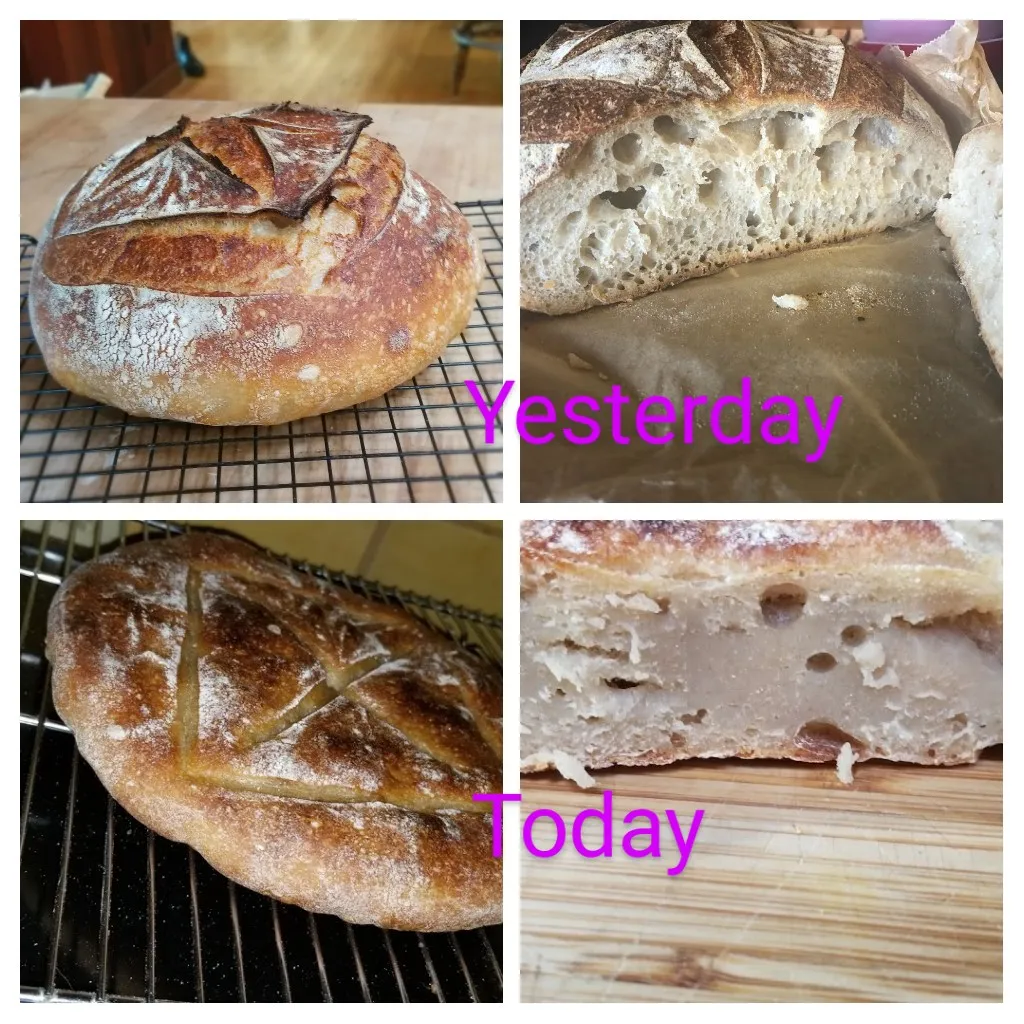
Let's say you have pushed the amount of water in the dough to the point that you end up with beautiful, lacey, creamy, open crumb.
Now, let's say you push the amount of water beyond that point. What would the crust and crumb look like?
I asked because I made a beautiful Tartine Country Sourdough yesterday. It was quite exciting.
But, today's bake is the worst ever. I can think of only 2 variables:
1. I ground up the grey celtic sea salt for today's bake rather than adding the large crystals I put in yesterday's bake.
2. I may have been a bit heavy handed with the water with today's bake.
I am guessing #1 wouldn't have a significant impact. But, maybe I am wrong.
It must be 2. unless you used way more salt than usually.
It looks heavily underpoofed and underbaked. What was the hydration?
Same amount of salt.
I don't know the hydration. I started with 70% but then I kept adding splashes of water pre-bulk fermentation like Jennifer @ Tartine does in her recent videos until is "felt" right. It did that both days.
But, I clearly haven't been baking long enough to know what "right" feels like. Lol.
While there are successful high hydration breads (80-85% is still manageable with good flour, even 90% when using whole wheat), for now I would recommend sticking to 70%. It's a good hydration to start and train with and you can get very decent results (as you have seen yourself).
It's okay to wet your hands a little when doing stretch & folds, but that's really it. That way you keep control of your hydration and can replicate successes better.
My bread in the picture has 70% hydration (give or take) and you can see, it work's super well :)
Next time measure the water that you keep aside for adding and measure uit again when you done.
then you have al lease a idea how much water you used.